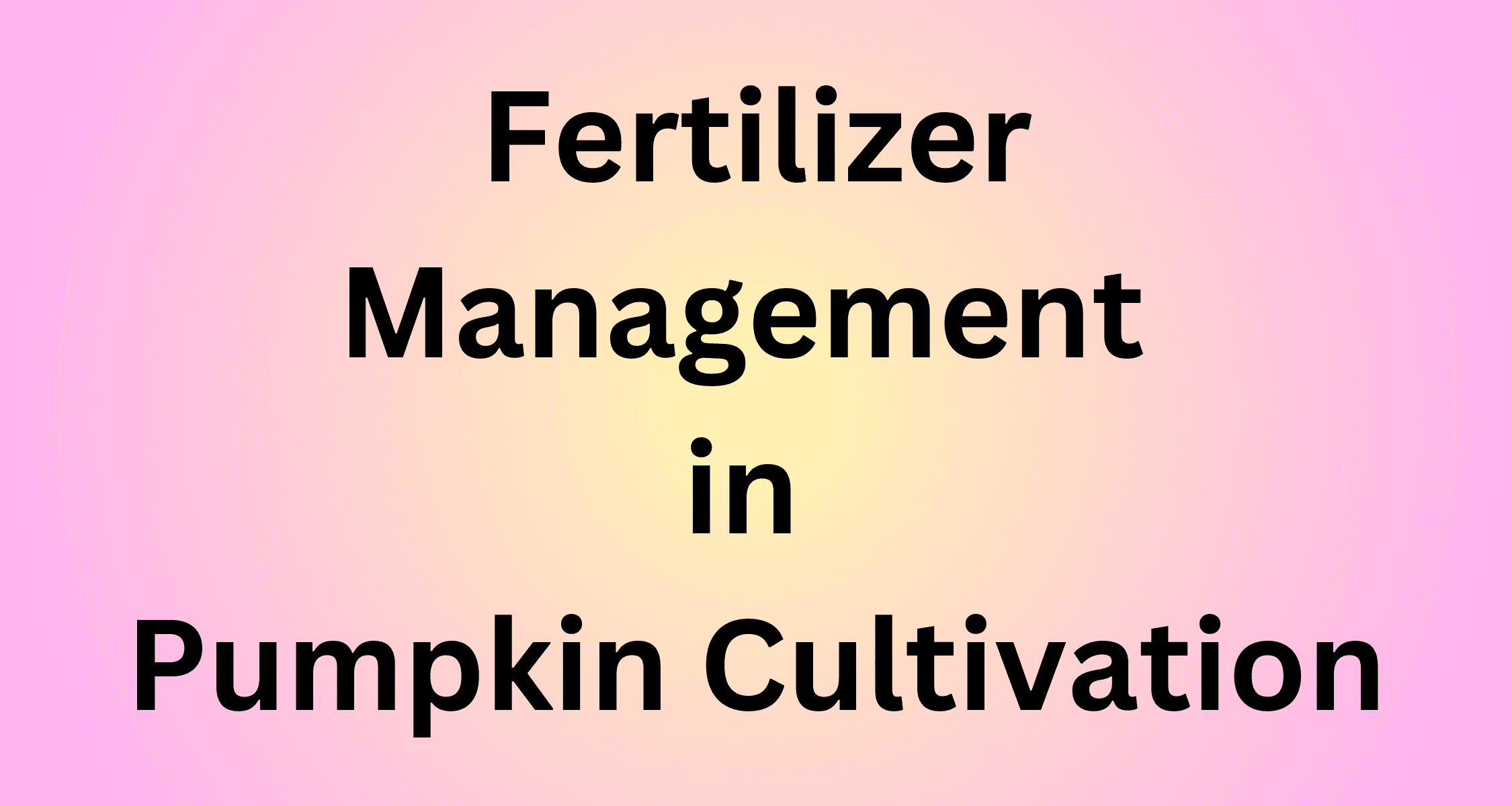Fertilizer Management in Pumpkin Cultivation

Pumpkin is considered one of the major vegetables and can become a good source of income for farmers. Proper fertilizer management is crucial for a good yield in this crop. Fertilizers not only aid in plant growth and development but also improve the quality and quantity of the fruits. By adopting proper fertilizer management methods in pumpkin cultivation, farmers can not only increase production but also maintain soil fertility. In this post, we will provide detailed information on fertilizer management in pumpkin crops to help farmers achieve higher profits from pumpkin farming.
Problems Caused Due to Lack of Fertilizers in Pumpkin Cultivation
- Reduction in Yield: Lack of nutrients can affect plant growth, which can be a major cause of reduced pumpkin yield.
- Decrease in Quality: Due to insufficient nutrients, the quality of pumpkin fruits gradually declines, affecting both their taste and size.
- Increased Vulnerability to Pests and Diseases: Nutrient deficiency weakens the plant's resistance to diseases, making it more prone to pest infestations and various diseases.
- Delay in Harvesting: Due to an imbalance of nutrients, plant growth slows, leading to a longer time for the crop to mature for harvest.
- Reduction in Soil Fertility: Continuous tilling and farming deplete the nutrients in the soil. Therefore, it is essential to use the right amount of nutrients to maintain soil fertility and promote plant growth.
Fertilizer Management in Pumpkin Plants
- As a basal dose, apply 10-15 tons of cow dung manure, 36 kg of urea, 10 kg of micronutrients, 43 kg of DAP, and 33 kg of MOP per acre of land.
- Additionally, use 4 kg of 'DeHaat Starter' and 25 kg of magnesium sulfate (DeHaat MgSO4) per acre.
- 20-25 days after planting, during the growth stage, apply 36 kg of urea, 750 grams of calcium nitrate (DeHaat CaNO3), 200-300 grams of boron, and 750 grams of 00:52:34 mono-potassium phosphate (DeHaat NutriOne MKP 00:52:34) per liter of water.
- During the flowering stage or 35-45 days after planting, apply 450 ml of 'DeHaat Boost Master' per acre.
Things to Keep in Mind While Using Fertilizers for Crops
- Soil Testing: It is essential to test the soil before applying fertilizers. This helps identify which nutrients are lacking and in what quantities fertilizers should be used. Soil testing can prevent the unnecessary use of fertilizers.
- Choosing the Right Fertilizer: Select the fertilizer based on the crop's needs and the soil's condition. A balanced amount of nitrogen, phosphorus, potassium, and micronutrients ensures better plant growth.
- Correct Fertilizer Dosage: The amount of fertilizer should be determined based on the crop's needs, soil test results, and expert recommendations. Overuse of fertilizers can negatively impact both the soil and the crop.
- Timing of Fertilizer Application: Fertilizers should be applied according to the crop's growth stages. Nitrogen should be given in the early growth stages, while phosphorus and potassium are best applied during root development and flowering.
- Proper Fertilizer Application Method: Pay attention to the method of application. Fertilizers should be mixed well into the soil near the roots for optimal absorption. Water-soluble fertilizers can also be applied during irrigation.
- Safety Measures: Use protective gear such as masks, goggles, gloves, and scarves when applying fertilizers. Keep fertilizers away from children and animals.
Effects of Excessive Use of Fertilizers
- Alkalinity or Acidity in Soil: Overuse of chemical fertilizers can disrupt the pH balance of the soil, making it either alkaline or acidic, which hinders plant growth.
- Degradation of Soil Structure: Excessive fertilizer can make the soil hard with poor water retention, depriving plant roots of essential oxygen and water.
- Nutrient Imbalance in Soil: Overusing one type of fertilizer can deplete other essential nutrients, leading to imbalances in the soil.
- Groundwater Pollution: Excess fertilizers can wash into groundwater during rainfall, increasing nitrate and phosphate levels, and leading to water pollution.
- Surface Water Pollution: Fertilizer runoff into rivers, lakes, and ponds increases nutrient levels in water, promoting excessive algae growth and reducing oxygen, which affects aquatic life.
- Fertilizer Burn: Excessive fertilizer can burn plant roots and leaves, stunting growth or killing the plants.
- Increased Susceptibility to Diseases and Pests: Overuse of fertilizers can weaken plants' natural immunity, making them more prone to diseases and pests.
- Greenhouse Gas Emissions: Excessive use of nitrogen-based fertilizers increases emissions of greenhouse gases like nitrous oxide, contributing to global warming.
- Impact on Biodiversity: Overuse of fertilizers disrupts natural ecosystems, reducing the variety of plant and animal species.
- Economic Loss: Overusing fertilizers increases production costs for farmers, leading to economic loss.
- Human Health Impact: Fertilizer residues can remain in crops, leading to various health issues when consumed.
What fertilizers do you use in pumpkin cultivation? Share your answers and experiences with us in the comments. For more such information, follow the ‘Krishi Gyan’ channel now. Don’t forget to like and share this post so that other farmer friends can benefit from this knowledge.
Frequently Asked Questions (FAQs)
Q: What is the best fertilizer for pumpkins?
A: For better growth of pumpkin crops, use well-decomposed manure along with a balanced amount of nitrogen, phosphorus, and potassium. To achieve optimal results, have the soil tested before applying fertilizers. If necessary, consult agricultural experts.
Q: What type of compost should be used for pumpkins?
A: It is recommended to use compost rich in organic matter, made from well-decomposed materials. A mixture of green and brown materials like kitchen waste, leaves, and grass clippings is ideal. Apply this compost while preparing the field and as top dressing during the growth phase.
Q: How can pumpkin yield be increased?
A: To boost pumpkin yield in India, ensure the plants receive adequate sunlight, water, and nutrients. Proper spacing, regular weeding, and pest control measures can also help increase yield. Additionally, using high-quality seeds and selecting disease-resistant varieties can improve crop production.
Q: How to use fertilizers in pumpkin plants?
A: To address nutrient deficiencies in pumpkin plants, apply appropriate amounts of compost and fertilizers during field preparation. Fertilizers can also be used a few days after planting. Make sure to carefully monitor the amount of fertilizer applied.
Please login to continue

Get free advice from a crop doctor
